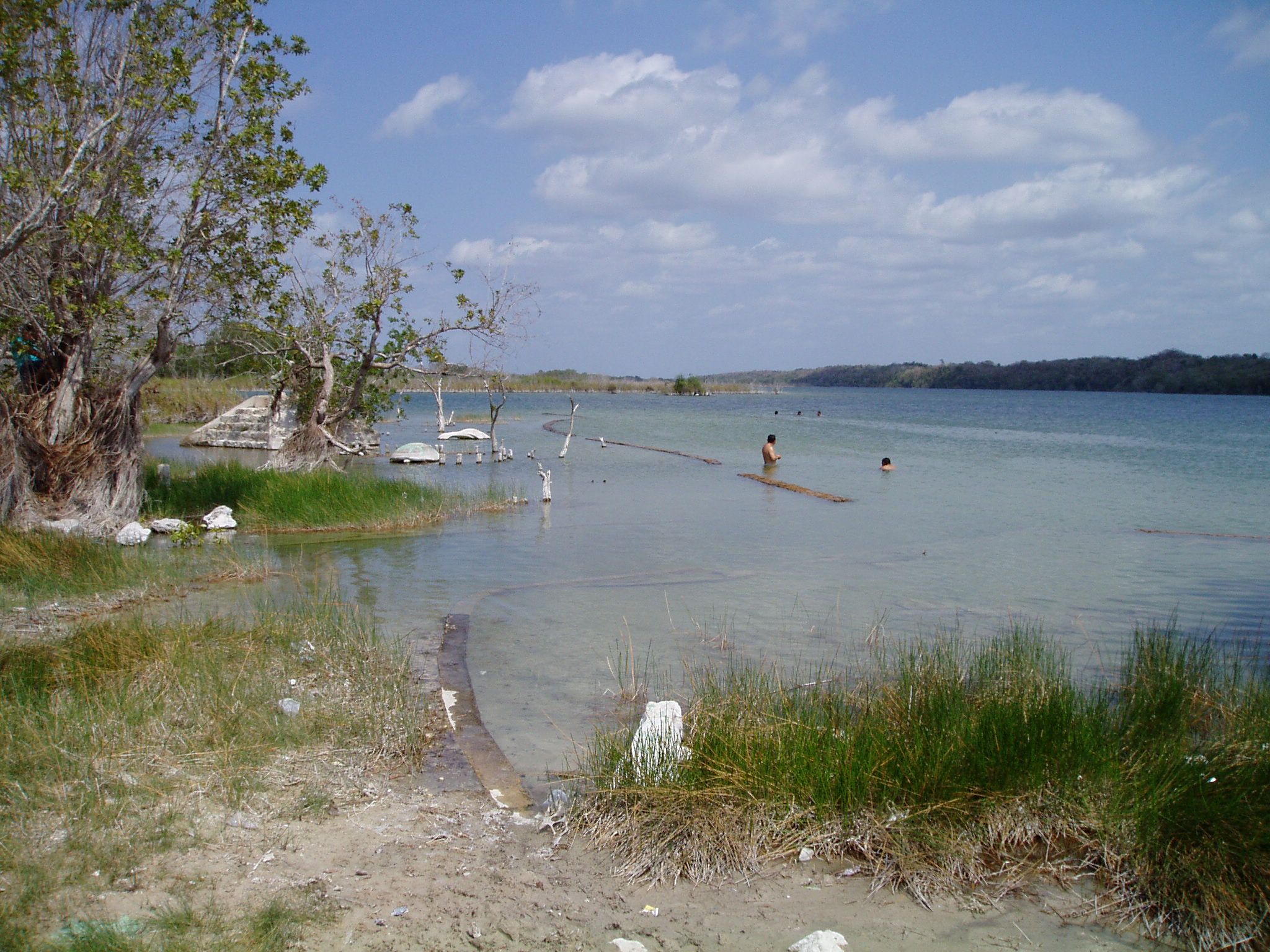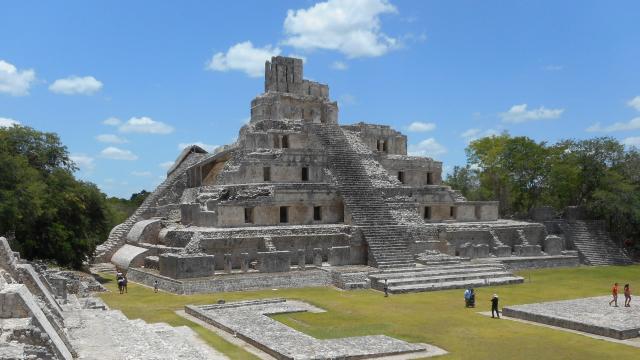The ancient Mayan pyramid Pirámide de los Cinco Pisos is over 30.48m tall.Photo: Nick Evans, University of Cambridge
The ancient Maya were an innovative people. They constructed intricate cities throughout the tropical lowlands of the Yucatán Peninsula, communicated using one of the world’s first written languages, and created two calendar systems by studying the stars. But despite their achievements, the thriving Mayan civilisation mysteriously collapsed sometime between the eighth and ninth centuries. We still don’t know exactly why.
The general consensus is that the Mayan collapse was caused by a number of things, including disease, war, and other sociopolitical conflicts. One natural factor may have contributed to all of these issues: drought. A particularly bad drought would have made it difficult for the Maya to collect enough drinking water and to irrigate their crops. It also could have encouraged the spread of disease and increased the strain between Mayan leaders and their people.
Now, a new study quantifies just how harsh the Mayan droughts were.
“We already knew that final stages of the Terminal Classic Maya period were characterised by severe droughts,” Fernando Gázquez-Sánchez, a study author and geochemist at St. Andrew University in Scotland, told Gizmodo. “However, our investigation evaluates the intensity of these dry periods.”

Lake ChichancanabPhoto: Mark Brenner
By analysing sediment from Lake Chichancanab in the Yucatán Peninsula, Gázquez-Sánchez and his colleagues found that compared to today, annual rainfall decreased by between 41 per cent and 54 per cent over the multi-decade Mayan drought. When the drought was most severe, rainfall plummeted by as much as 70 per cent, the researchers wrote in their study published Thursday in Science.
“This really represents the next step in understanding how drought affected the Ancient Maya,” Peter Douglas, a geochemist from McGill University who did not work on the study, told Gizmodo. “The authors are using very refined analytical techniques… and the result is that the droughts must have been very bad.”
The team also found that the region’s relative humidity fell by somewhere between 2 per cent and 7 per cent compared to today’s climate. Those numbers have less direct implications for ancient Mayan crops, but they are an indicator that climate change was happening on a larger scale, Cambridge paleoclimatologist and co-author Nick Evans told Gizmodo.
The key to unlocking all of these figures is a mineral in the lake sediment called gypsum. Gypsum forms down at the bottoms of lakes during droughts or dry conditions. In doing so, it traps water molecules in its structure, effectively preserving them like a “water fossil,” said Evans.
The team developed a method to extract that thousand-year-old water and study the hydrogen and oxygen isotopes inside. During drought conditions, lighter water isotopes evaporate first, and the heavier isotopes are left to be trapped in gypsum. By tallying when those heavy isotopes were more common, the researchers were able to create rainfall and humidity estimates.
Gázquez-Sánchez said this method of analysing “fossilized water” could reveal a lot about worldwide climates ranging back millions of years. It could even tell us about the climate histories of other planets: Mars, for instance, also has gypsum deposits.
“Our method could be used to analyse gypsum either onboard a rover vehicle, or eventually on Earth from a sample return mission,” Gázquez-Sánchez told Gizmodo. “This may open the door to reconstruct the past climate on Mars.”
There’s still a lot the method could reveal about the ancient Mayan civilisation collapse, too. Douglas told Gizmodo the new study is definitely a preliminary one, and is more of a jumping off point. But it is promising.
“To move forward, we need better information on when and where drought happened,” he said. “If we can repeat these techniques in more locations, and get more precise ages for these kinds of geochemical signals, then climate scientists can really begin to work closely with archaeologists to understand how drought impacted the Maya in detail.”
[Science]
